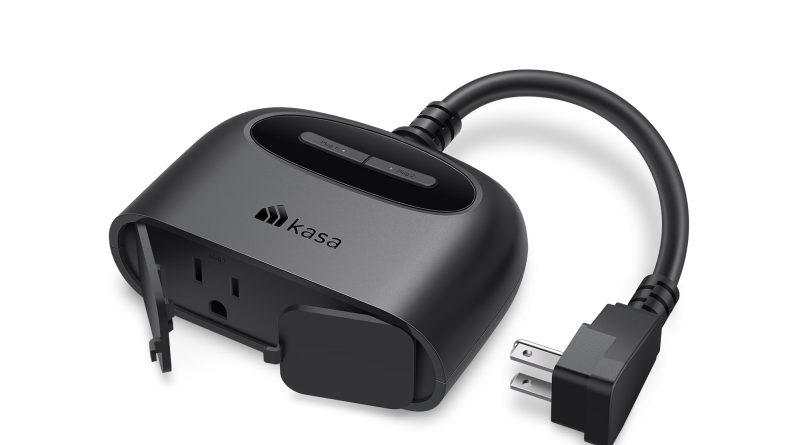Smart Home Automation for Renters and Temporary Setups: No Wires, No Worries
You rent your apartment. You move every couple of years for school or work. Or maybe you just don’t want to deal with the hassle of drilling holes and rewiring your space. For the longest time, the dream of a smart home felt like a permanent installation—something for homeowners with a toolbox and a penchant for DIY electrical work.
That’s simply not the case anymore. The smart home revolution has quietly pivoted, and it’s now welcoming renters and nomads with open arms. The secret? A new wave of devices that are powerful, portable, and profoundly simple to set up. Honestly, you can build a sophisticated, responsive home ecosystem without a single screwdriver. Let’s dive in.
The Renter’s Golden Rule: Think Plug-and-Play, Not Permanent
Here’s the deal: your smart home strategy needs to be as flexible as your lease. The core principle is to focus on devices that get their intelligence from one of two places: the wall outlet or batteries. We’re talking about gadgets you can unplug and toss in a box on moving day, leaving zero trace behind.
This approach isn’t about limitations; it’s about smart, intentional choices. You’re building a home that adapts to you, not the other way around. And honestly? It’s liberating.
The Core Components of Your Portable Smart Home
1. The Brain: A Smart Speaker or Display
This is your starting point. A device like an Amazon Echo, Google Nest, or Apple HomePod mini sits on a countertop or shelf. It listens for your voice, controls your other gadgets, and plays music. It’s the command center of your rental-friendly setup. Just plug it in, connect to Wi-Fi, and you’re off.
2. Smart Lighting That Doesn’t Need a New Switch
This is where most people think they’re stuck, but it’s actually the easiest win. Forget about replacing light switches—that’s a landlord’s nightmare. Instead, embrace smart bulbs and smart plugs.
Smart bulbs, like those from Philips Hue, Nanoleaf, or Wyze, screw into your existing lamps and fixtures. You control them with your phone or voice. Want to change your room from bright white for working to a soft amber for relaxing? Done. Smart plugs are even more versatile. Plug your dumb, old lamp into the smart plug, and suddenly you can turn it on and off remotely or set a schedule. It’s like giving your regular stuff a brain transplant.
3. Climate and Comfort on Your Terms
You know that clunky, old thermostat your landlord won’t let you replace? You can work around it. Smart plugs can also control freestanding fans and space heaters. Imagine a routine called “Good Morning” that turns on your lamp and starts warming up the room with your space heater before you even get out of bed.
For air quality, smart air purifiers and humidifiers are fantastic. They’re standalone units you just plug in, and many can automatically adjust their settings based on the room’s conditions.
4. Security and Peace of Mind
Security is a huge concern, especially in temporary housing. Luckily, there are brilliant, non-permanent solutions.
- Smart Cameras: Indoor models like the Blink Mini or Wyze Cam sit on a shelf or mount with a sticky pad. No drilling required.
- Video Doorbells: You don’t need to rewire your doorbell. Battery-powered models like the Ring Video Doorbell or the Eufy Video Doorbell use a quick-release bracket for easy charging and, you guessed it, no hardwiring.
- Contact Sensors: These little magnetic strips are a renter’s best friend. Use adhesive strips to place them on doors and windows. They’ll alert you if a door is opened while you’re away or if a window is left ajar. It’s a huge security boost for basically zero commitment.
Making It All Work Together: Routines and Automation
This is the magic. Individual smart devices are neat, but when they talk to each other, your apartment truly comes alive. This is where you leverage long-tail keywords like “temporary smart home automation routines” without even thinking about it.
Think about your day. You could create a “Goodnight” routine. With one phrase, it locks your smart lock, turns off all the lights, adjusts the thermostat (via your plug-in heater), and arms your security sensors. It’s like tucking your entire home in for the night.
Or, a “Leaving for Work” routine that turns off all non-essential plugs, sets a smart bulb in the living room to a random schedule to simulate someone being home, and starts the robot vacuum. These automations are the soul of your setup, and they’re completely software-based. They move with you.
A Quick-Start Guide: Your First Week Smart
Feeling overwhelmed? Don’t be. Start small. Build your system one piece at a time.
| Day 1-2 | Get a smart speaker. Get comfortable with voice commands and playing music. |
| Day 3-4 | Add one or two smart bulbs to your most-used lamps. Play with colors and schedules. |
| Day 5-6 | Introduce a smart plug. Use it for a fan, a lamp, or even your coffee maker. |
| Day 7 | Create your first simple routine, like “Goodnight” to turn everything off. |
The Unspoken Perk: It All Packs Away
Here’s a thought not enough people mention. When it’s time to move, your entire smart home packs neatly into a couple of boxes. You’re not leaving your investment in the walls. You’re taking your personalized, intelligent environment with you to your next temporary stop. In a world of constant change, that’s a powerful kind of stability. Your home isn’t the four walls; it’s the way you make them work for you.
So go ahead. Dip a toe in. Start with a single smart bulb and see how it feels to command your light with a whisper. You might just find that the most flexible home is also the smartest one you’ve ever lived in.

